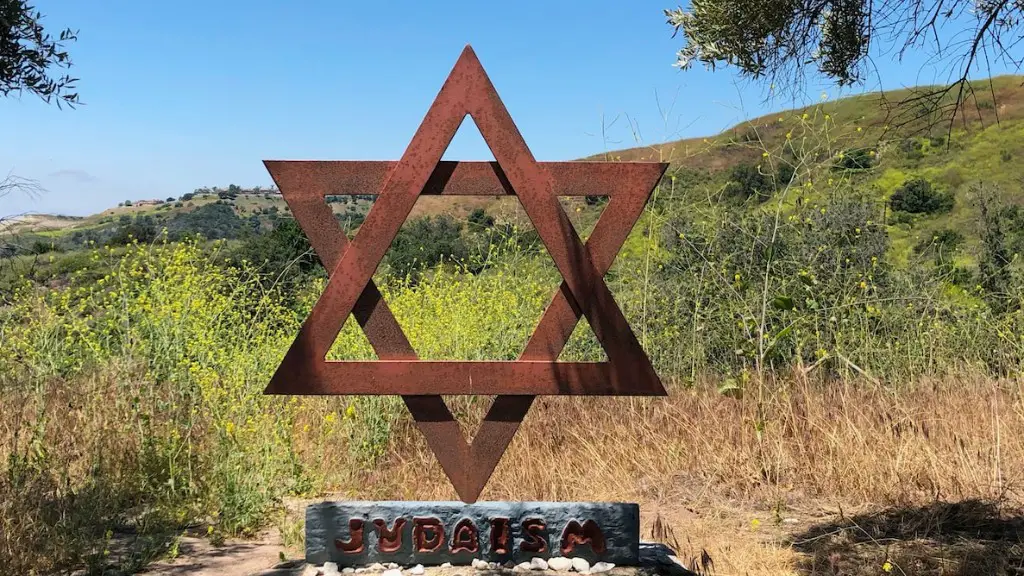The Rise and Development of Judaism
Judaism is the oldest of the world’s major monotheistic religions, having emerged in the Middle East over three thousand years ago. It is based upon the belief in a single God, who created and sustains the universe. From its origins in the mid-2nd millennium BCE, it has developed over time into a variety of forms and practices.
Judaism traces its roots back to Abraham, who scholars believe lived in the Middle East sometime between the 19th and 16th centuries BCE. He is traditionally regarded as the first Jew and the founder of monotheism. He and his descendants through Isaac and Jacob are known as the “fathers” of the Jewish people. Abraham was born into a polytheistic culture, but had a revelation of the one true God and introduced this belief to the world.
The earliest written records of Judaism come from the 8th century BCE, when the Kingdom of Israel was established. It was at this time that the Jewish people adopted the commandments of the Torah, or the first five books of the Bible. During this period, the religion was largely a nomadic one, with its people often on the move in pursuit of food and other resources.
The Jewish faith underwent significant changes in the 6th century BCE, when the Babylonians invaded Israel and destroyed the First Temple. This event is known as the Babylonian Exile. During this time, the people of Israel were scattered throughout the region. They adapted to their new surroundings, formed rabbinical schools, and developed a set of laws known as Halakha. These laws would shape Judaism for centuries to come.
In the second half of the 5th century BCE, leaders of the Jewish faith in Palestine (which was then under Persian rule) set out to reestablish the Jewish nation in its homeland. They developed the Second Temple and served as spiritual and political leaders for the people. During this period, known as the Second Temple period, the Jewish people greatly expanded their worship practices, creating a sophisticated system of rituals, festivals, and prayers.
The period of the Second Temple came to an end in 70 CE, when the Romans destroyed the Temple. This event is known as the Second Destruction of Israel. After this point in time, the Jewish people embraced different forms of the religion according to their locations and needs. Synagogues were formed, and smaller forms of worship were developed.
Leaders and Practices of Judaism
Throughout history, a variety of religious leaders have contributed to the evolution of Judaism. In the first century CE, a man by the name of Rabbi Akiva formulated a code of law known as the Mishnah, which shaped Orthodox Jewish practice to this day. In the early 11th century, Rabbi Gershom Meor HaGolah, referred to as the “Light of the Diaspora,” established the practice of reading from the Torah each Sabbath.
The practice of faith has evolved over the centuries and today, observant Jews practice many traditional rituals. These include the sabbath, a weekly day of rest devoted to prayer, study, and reflection; fasting on the Jewish holy days of Yom Kippur and Tisha b’Av (the anniversary of the destruction of the First and Second Temples, respectively); and wearing a tallit (prayer shawl) and tefillin (phylacteries).
Judaism in the Modern World
Today, Judaism is an ever-evolving, worldwide religion. There are branches of the faith in many countries, including the United States, where it has grown in recent years. Jews living in the United States may practice either of the two main branches of the religion: Reform Jews and Conservative Jews.
Reform Jews are more liberal in their interpretation of Jewish customs and embrace a more contemporary approach to their faith. Conservative Jews adhere more closely to traditional forms of practice and embrace a more traditional approach.
In addition to the Reform and Conservative branches, there is also a significant Hasidic population in the United States. Hasidic Jews are known for their close-knit communities, and for their traditional forms of dress and practice.
In recent decades, a movement known as Reconstructionist Judaism has also taken root in the United States. Reconstructionists take a more inclusive approach to faith, encouraging openness to different religious beliefs.
The Torah in Judaism
The Torah is the central text in Judaism. It is composed of the five books of Moses, known as the ‘Law’ in the Hebrew scriptures. For Jews, the Torah is a source of guidance and a reminder of their covenant with God. It is studied in depth in spiritual classes, private study, and rabbinical lectures.
The Torah is divided into sections, known as parashah. Each parashah is comprised of a collection of short narratives, laws, and ethical teachings. These were given to the Jews on Mount Sinai and are known as the 613 Commandments.
The Commandments are divided into two sections: the positive commandments, which involve the performance of a certain action, and the negative commandments, which involve the abstention from a certain action. Both sections are seen as equally important, andJews are required to follow both.
Rituals In Judaism
Observant Jews today practice a variety of rituals. One of the most important is prayer. Jews pray three times a day: morning, afternoon, and evening. Prayers are composed of blessings and recitations of passages from the Torah. They are traditionally said in the synagogue or at home with a minyan (quorum) of ten people.
In addition to prayer, Jews observe many other rituals. These include reading from the Torah on the Sabbath, studying sacred texts, celebrating holidays and festivals, and honoring the Sabbath with rest and prayer. Other rituals involve a variety of customs, including lighting Shabbat candles, blessing wine, partaking in the Passover Seder, and gathering to eat other festive meals throughout the year.
Beliefs In Judaism
Judaism is a faith-based religion. Jews believe in the one, omniscient, and omnipresent God. They also envision God as a just and loving parent.
In addition to the concept of God, Jews believe in the importance of observing the commandments of the Torah and accepting the validity of the written and orally transmitted laws of Moses. They are also obligated to treat others with respect, love, and kindness; pursue peace and justice; and strive to improve the world through love and service.
Celebrations and Traditions
Judaism has a rich tradition of rituals and customs that are observed throughout the year. The most important holidays are Rosh Hashanah (the Jewish New Year) and Yom Kippur (the Day of Atonement).
During these days, Jews observe a period of rest, prayer, and reflection. Other celebrations take place throughout the year, including Passover (the Festival of Liberation), Shavuot (the Festival of Weeks), Sukkot (the Festival of Booths), and Hanukkah (the Festival of Lights).
These holidays are all marked by special rituals and traditions, such as lighting the menorah, exchanging gifts, and preparing special meals. Jews also celebrate life cycle events such as weddings, bar mitzvahs and bat mitzvahs, and baby-namings.
The Begining Date of Judaism
The beginning date of Judaism is traditionally traced back to the story of Abraham, who scholars believe lived in the Middle East sometime between the 19th and 16th centuries BCE. It was in this period when Abraham is believed to have had a revelation of the one true God and introduced this belief to the world.
The earliest written records of Judaism come from the 8th century BCE, when the Kingdom of Israel was established and the Jewish people adopted the commandments of the Torah. Judaism has developed over time into a variety of forms and practices and has spread to many parts of the world.
Preservation of Jewish Beliefs
Throughout history, Judaism has been shaped and reshaped by leaders and practitioners, producing many branches and traditions. However, the core beliefs and values of the faith have been preserved. These include the creed of monotheism, adherence to the laws of the Torah, and the commitment to love and justice.
In recent years, a higher emphasis has been placed on social justice, racial equality, and other important issues. As a result, Jews around the world have redefined their faith to include a commitment to social justice and peace. This is seen in the rise of Reform Judaism and Reconstructionist Judaism, both of which have embraced a more progressive approach to faith.
Synagogues and Communities
In today’s world, Jews have formed communities and built synagogues in many countries. These places of worship have become hubs for learning, celebration, and unity.
Synagogues represent the diversity of the Jewish faith and help people to connect with their roots and explore their heritage. As a result, Jews around the world are able to come together and honor their shared history, while also engaging in a modern interpretation of their beliefs.
Preserving the Legacy of Judaism
From its origins in the mid-2nd millennium BCE to its contemporary expressions in today’s world, Judaism has evolved and survived over the centuries, thanks to its vibrant people and the countless leaders and teachers who have built upon its core beliefs.
The Jewish community has a responsibility to preserve their shared history and ensure that Judaism’s timeless teachings are passed on to the next generation. As such, Jews around the world are striving to honor their faith and keep it alive, through prayer, study, and action.


